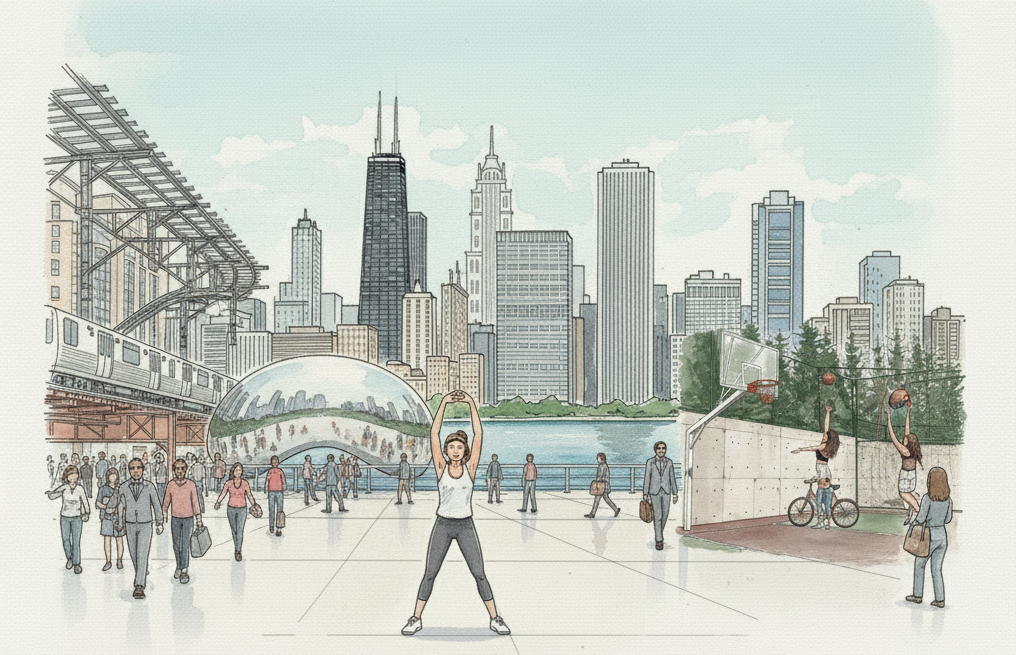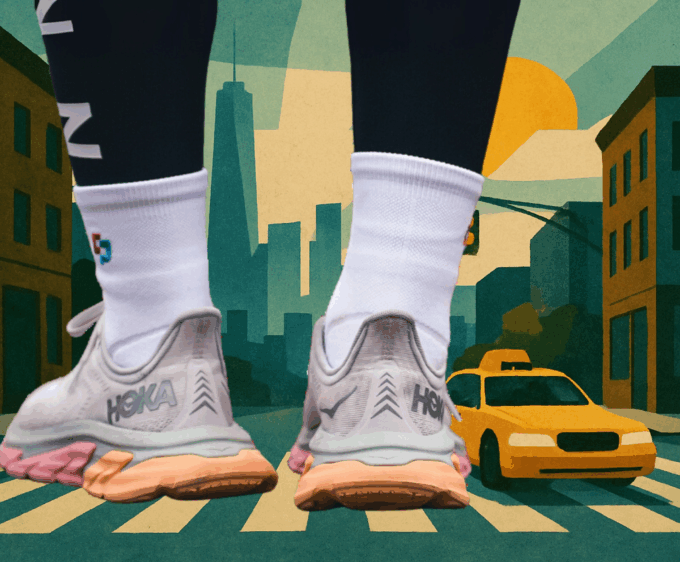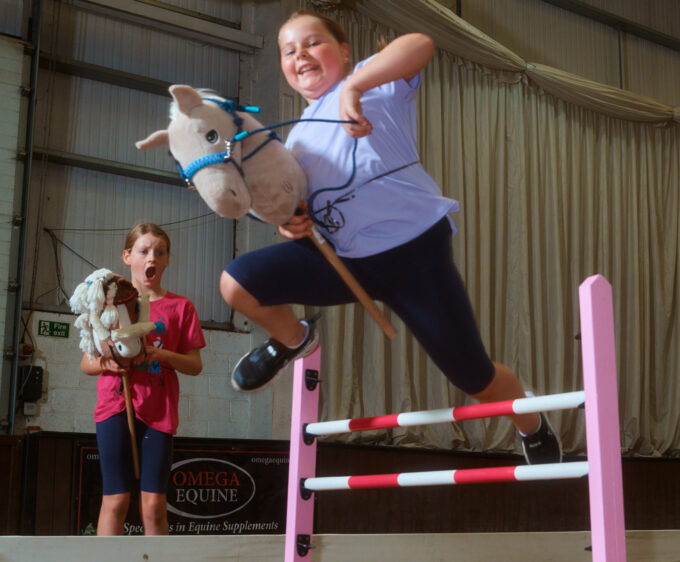
Calm in Chaos
Juggling work, sport and loud flatmates, one writer struggles to find calm. But what if rest is not about sleep or schedules? Here, her sceptical journey uncovers surprising truths about reclaiming peace in a chaotic world.
By Maya Sharma
There are weeks when I forget what silence sounds like.
Between the L rattling past my window and notifications pooling into my phone, even the idea of calm feels like something on my to-do list. I’m thirty, living in Chicago with two roommates who are, by all definitions, lively. They mean well, but our apartment hums with constant motion. There’s music, gossip, laughter, and someone inevitably running a blender at midnight. I’ve tried every supposed route to calm: clearing my schedule, deleting apps, yoga videos, breathwork classes that left me dizzy. Nothing works. Calm feels like another thing I’m failing to achieve.

Work adds its own strain. I spend my days in meetings where urgency is currency, emails stacking up faster than replies can keep pace. My evenings fill themselves with plans that feel impossible to refuse. A friend’s party, a game by the lake, a run meant to clear my head but that leaves me restless instead. I tell myself I’m active, balanced, sociable. Really, I’m exhausted. The American Psychological Association reports that nearly half of adults in the US feel consistently burned out, with women disproportionately affected. The data comforts me. At least I’m not imagining it.
RESTLESS
Sport, which should be a release, often turns competitive. Pick-up basketball doesn’t relax me; it sets my body racing. Running clears my mind for a minute, then my thoughts come back sharper. Every kind of movement starts to serve a purpose, every second of rest feels indulgent. The wellness culture surrounding me insists that calm must be achieved or optimised. Even mindfulness becomes performance.
So I start asking around, wondering what other women are doing to slow down. One friend tells me she makes coffee and just watches the street before work. Nothing guided, nothing recorded. Another swears by short stints of lying down, eyes closed, slowing her breath. I learn that neuroscientists at Stanford have researched something similar called non-sleep deep rest. It lowers cortisol and improves focus more effectively than scrolling through a phone pretending to rest. It’s science that values doing less, which feels oddly revolutionary.

I start noticing the gaps between noise. The quiet on my walk home, the stillness before lights flick on. Psychologists who study recovery say genuine rest isn’t about absence but boundaries. It’s not about escape, but knowing when to stop. I try to test that idea by cancelling plans without guilt. Instead of explaining myself, I just don’t show up. It feels uncomfortable at first. Then freeing.
Calm begins to appear in unlikely places. A slow bike ride where I don’t track distance. Sitting by the lake with no camera in hand. Letting sport become gentler rather than faster. This doesn’t make my life floaty or detached. It makes it inhabitable. The moments start to join like small points of clarity between chaos.
At a women’s boxing gym on the South Side, the coach tells me rhythm is what settles her. Once you find tempo, she says, your breath follows. I think she’s right. Movement doesn’t need to be still to be calm. The repetition of it, the focus, brings coherence. Studies in sports psychology back this up. Low-intensity rhythmic activity, like swimming or walking, activates the parasympathetic nervous system that regulates calm. It’s not about pausing entirely, but moving at a sustainable pace.
Living in a city like Chicago means calm can’t rely on quiet. The trains, the traffic, the chatter in coffee shops, they’re the pulse of it. The challenge is existing among the noise without becoming electrified by it. Sociologists have called this the culture of regulated intensity. Many women, especially in urban jobs, struggle not because they lack balance but because they no longer know what enough feels like. That idea stays with me. I’ve spent years thinking progress had to look busy.
Resilience

There’s no single fix to any of it. I still catch myself working too late or cycling faster than I need to. Some days, I find peace only by watching people in the park, folding themselves into slower rhythms. Cognitive scientists say we subconsciously mimic others’ states through mirror neurons. Calm might well be contagious. Borrowed from those who know how to breathe more deeply than we do.
Gradually, I begin deleting the constant measuring tools. No step tracker, no app to record miles. I start walking as if it’s the point, not the means. I notice small things again. The weather changing as I cross neighbourhoods. The heaviness that lifts after ten quiet minutes near water. None of it feels dramatic, but it feels earned.
There’s an expectation that calm comes packaged. Candle-lit, meditative, perfectly documented. The truth is far less polished. It looks like sitting still without needing to name it. It looks like closing your laptop at six and not explaining why. Athletes like Serena Williams and Simone Biles have both spoken publicly about the discipline of rest, recognising that the ability to stop is as critical as the ability to continue. Their honesty has shifted what strength looks like. For many women, that shift is the lesson.
Calm, I’ve realised, is not a final state. It’s a posture, an attitude to activity. When I start seeing it that way, everything feels less unattainable. Swimming in slow, deliberate strokes. Turning off my phone for an afternoon. Having no music on for the first time in months. These are not escapes but rebalances, a way to return to myself without fanfare.

The roommates still make a racket. They still hold their “wine and opinions” nights, still fill the kitchen with chatter. But I’ve stopped trying to control their chaos. I close my door, put on headphones, and focus on my own breath. Calm, it turns out, doesn’t need silence. It just needs boundaries. These small practices form a kind of self-respect. A quieter, steadier one.

I no longer think of calm as a reward for productivity. It’s not weekend-only behaviour. It’s more fundamental than that, more ordinary. It’s choosing pace over pressure. It’s letting my body decide when it’s done. The world outside keeps moving, the city still vibrates, but I don’t need to match it.
Finding calm hasn’t changed what I do, only how I do it. The noise hasn’t gone, but it no longer dictates me. When I stop chasing stillness, I find it everywhere. Sometimes it’s no more complicated than breathing, watching, existing. A skill you relearn, one practice at a time.
How do you find calm when life feels overwhelmingly busy? We want to hear your stories, tips or even struggles. Share your experience with us on Instagram @GloriousSport and join the conversation.
Editorial Design Root




